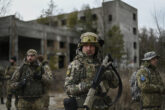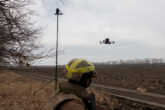March 30, 2017
War Control
Chinese Writings on the Control of Escalation in Crisis and Conflict
Whether or not atomic weapons are ever again used in warfare, the very fact of their existence, the possibility that they could be used, will affect the future of wars. In this sense Korea was an atomic war even though no atomic weapons were used. In this sense even the Cold War is an atomic cold war.
In a chapter examining China’s thinking on escalation, the authors of a comprehensive 2008 RAND study of escalation management in the 21st century came to the stark, and since widely cited, conclusion that Chinese authoritative writings on escalation and escalation management through 2005 appeared “to be undertheorized and still under development.”2 The authors arrived at their judgment after examining three broad categories of People’s Liberation Army (PLA) writings in which they found only limited research devoted to analyzing the general issue of escalation in warfare and even less focused on the more specific issue of the effect of PLA doctrine on the risks of inadvertent or accidental escalation. They did note, however, that interest in these topics “appears to be growing” in the Chinese military and observed that more writings on escalation and escalation control “may appear in the coming years.”3 A 2006 analysis of Chinese concepts in escalation management conducted by Lonnie Henley, at the time the defense intelligence officer for East Asia and the Pacific in the Defense Intelligence Agency, arrived at similar conclusions, including the observation that Chinese military writers were still in the early stages of considering how to manage the unwanted escalation of a crisis or conflict and the prediction that further development of such concepts could be expected over the next decade.4
The current understanding of Chinese thought on escalation of crises and conflicts among American scholars and practitioners alike has largely been based upon the RAND and Henley studies, together with a 2006 edited volume of American and Chinese case studies on the management of Sino-American crises.5 However, two studies authored by U.S. Sinologists that appeared in early 2016 are likely to revise and further refine current understanding. The first, a study on the evolution of Chinese crisis management theory authored by Alastair Iain Johnston of Harvard,6 and the second, a study on recent Chinese military writings on escalation control co-authored by Alison Kaufman and David Hartnett of CNA7 are based on Chinese writings that have appeared since the middle of the first decade of the 2000s; as such, they constitute important if not overdue appraisals that promise to add to the U.S. appreciation of Chinese views on escalation.
Understanding how Chinese military strategists think about escalation has only taken on added importance, if not urgency, in the eight years that have elapsed since the RAND study. To wit, the possibility of military crises and confrontations with China has increased and continues to do so as Beijing’s ambitions, interests, and capabilities grow.8 Continued advancements in the capabilities of the PLA conventional and nuclear forces and in the associated doctrine and operating approaches that condition their use in crisis and conflict raise concerns about the possibility of unwanted escalation. PLA developments in capabilities and doctrine for the domains of space and cyberspace raise similarly pronounced and novel concerns as military operations in both of those domains present additional and not fully understood avenues of unwanted escalation. That a Sino-U.S. crisis, let alone conflict, would play out under the nuclear shadow should be lost on no one.
Questions of particular salience to U.S. strategists and decisionmakers include: How do recent Chinese military writings describe escalation and the processes and actions by which it might occur in crisis or in war? What do Chinese strategists say about escalation prevention and control, their importance, and the challenges of implementing them? What do PLA analysts say about crises and conflict between nuclear powers and the necessity of limited means in the pursuit of limited political and military objectives in the latter; in short, what do they say about the concept of limited war? In contrast to the Chinese military texts from the first five to eight years of this century, do the more recent writings reflect a greater understanding – do they even acknowledge – that actions taken to deter an adversary can lead inadvertently to escalation? What do PLA strategists say about thresholds and red lines, and about communications between parties in time of crisis and war? Finally, what do authoritative texts say about escalation risks and challenges associated with the new and rapidly changing operational domains of space and cyberspace? In short, how are Chinese strategists accounting for escalation and limited war in their authoritative writings post-2010? Do their arguments and concepts remain “undertheorized”?
The full report is available online.
- Paul H. Nitze, “Atoms, Strategy and Policy,” Foreign Affairs, 34 no. 2 (January 1956), 187. ↩
- Forrest E. Morgan, Karl P. Mueller, Evan S. Medeiros, Kevin L. Pollpeter, and Roger Cliff, Dangerous Thresholds: Managing Escalation in the 21st Century (Santa Monica, CA: RAND Corp., 2008), 49. ↩
- Ibid., 48 and 51. ↩
- Lonnie D. Henley, “War Control: Chinese Concepts of Escalation Management,” in Shaping China’s Security Environment: The Role of the People’s Liberation Army, eds. Andrew Scobell and Larry M. Wortzel (Carlisle, PA: Strategic Studies Institute and U.S. Army War College Press, 2006), 81-103. Also see Lonnie D. Henley, “Evolving Chinese Concepts of War Control and Escalation Management,” in Assessing the Threat: The Chinese Military and Taiwan’s Security, eds. Michael D. Swaine, Andrew N.D. Yang, and Evan S. Medeiros, with Oriana Skylar Mastro, (Washington: Carnegie Endowment, 2007), 85–110. ↩
- Alison A. Kaufman and Daniel Hartnett, “Managing Conflict: Examining Recent PLA Writings on Escalation Control” (CNA, 2016), 1. The edited volume referenced is that of Michael D. Swaine and Zhang Tuosheng, eds., Managing Sino-American Crises: Case Studies and Analysis (Washington: Carnegie Endowment for International Peace, 2006). ↩
- Alastair Iain Johnston, “The Evolution of Interstate Security Crisis-Management Theory and Practice in China,” Naval War College Review, 69 no. 1 (Winter 2016), 29-71. Interestingly, just as the books discussed to this point, including the co-edited Swaine and Tuosheng volume, have helped form the American understanding of Chinese thought on escalation, Johnston reports his finding that the Swaine and Tuosheng volume “has had an important impact on crisis-management research in China.” Ibid., 33. ↩
More from CNAS
-
Defense / Transatlantic Security
When Defense Becomes Destruction: Austria-Hungary’s Mistake and Ukraine’s RiskThis article was originally posted on War on the Rocks. The southeastern Polish city of Przemyśl, with its elegant 19th century Habsburg-era train station, remains one of the ...
By Franz-Stefan Gady
-
Defense / Transatlantic Security
Ukraine’s Catch-22 MomentThis article was originally published in the Financial Times. In Joseph Heller’s wartime classic, Catch-22, the protagonist Yossarian seeks out the US army surgeon Doc Daneeka...
By Franz-Stefan Gady
-
CNAS Insights | Budgetary Own Goals Undermine “Speed and Volume”
On November 7, Secretary of Defense Pete Hegseth laid out a plan to overhaul the Department of Defense’s (DOD’s) acquisition system. Placing an emphasis on delivering new capa...
By Philip Sheers, Carlton Haelig & Stacie Pettyjohn
-
Drones: Who Is Making the New Weapons of War?
From Ukraine and Russia to Gaza and Sudan, drones have become a key weapon of war. Which companies are making them, and profiting from this rapidly expanding but controversial...
By Stacie Pettyjohn




